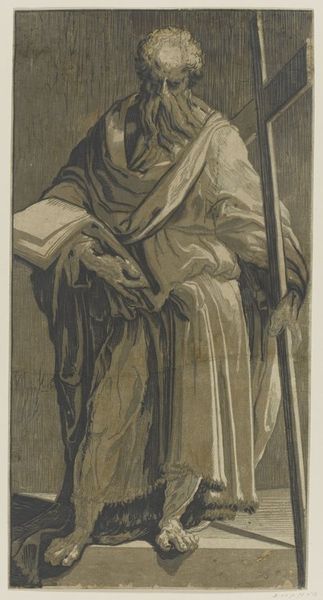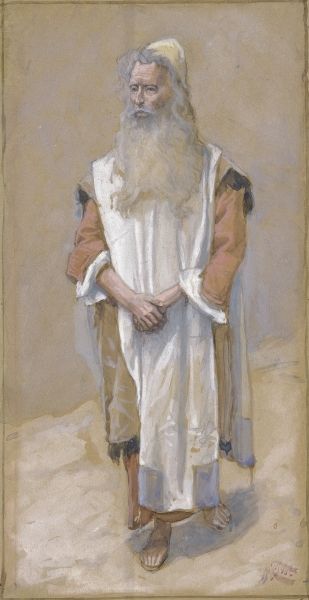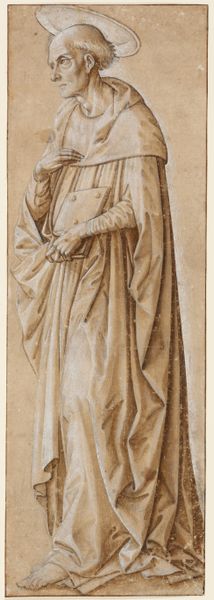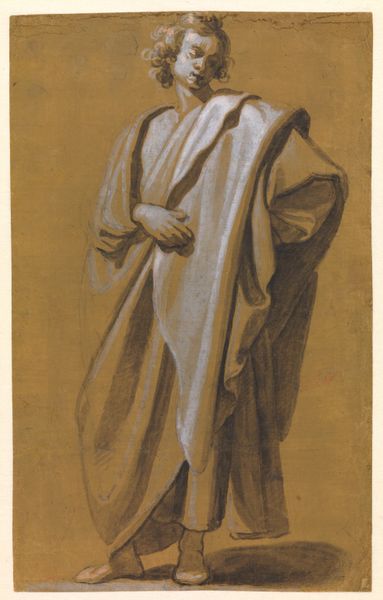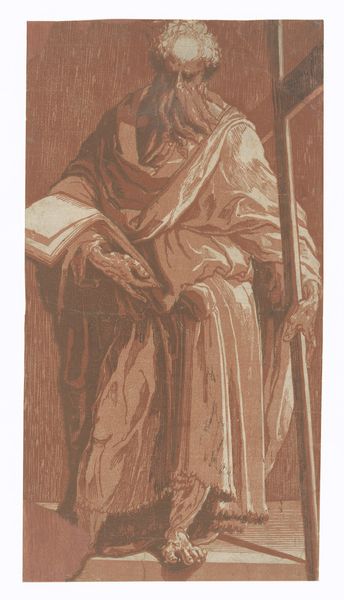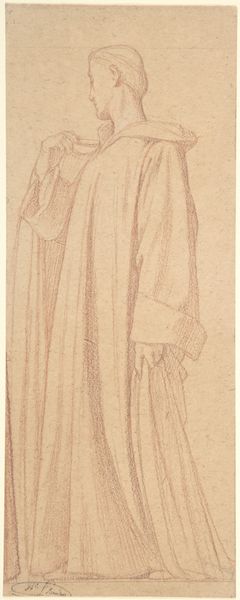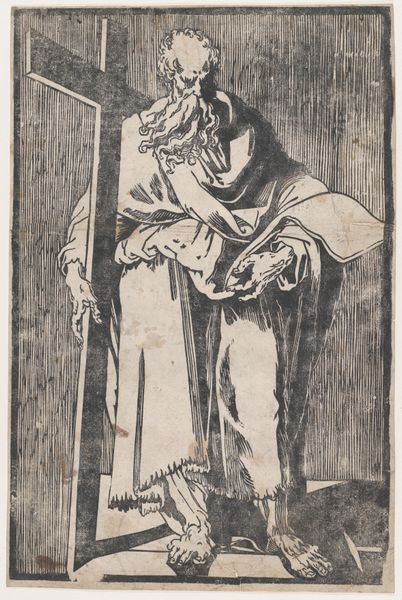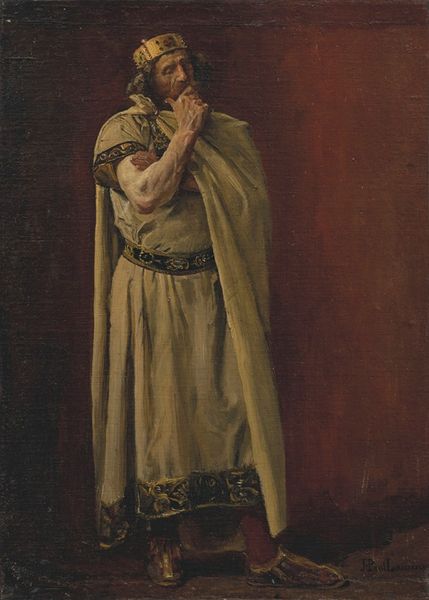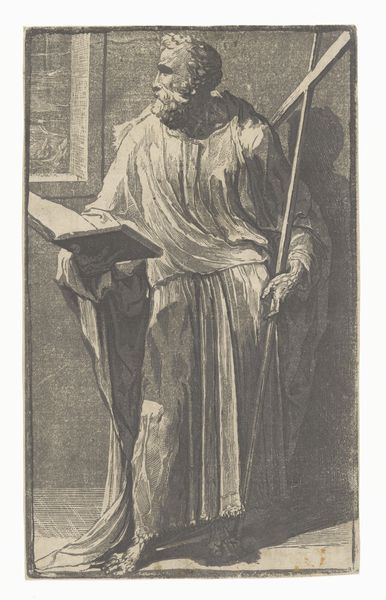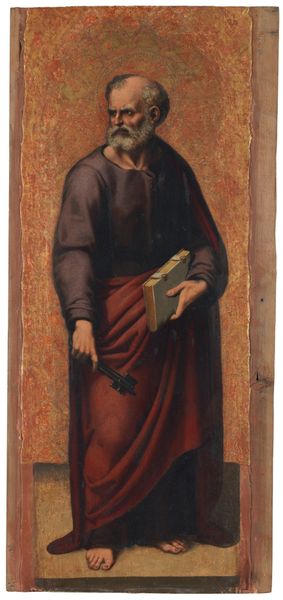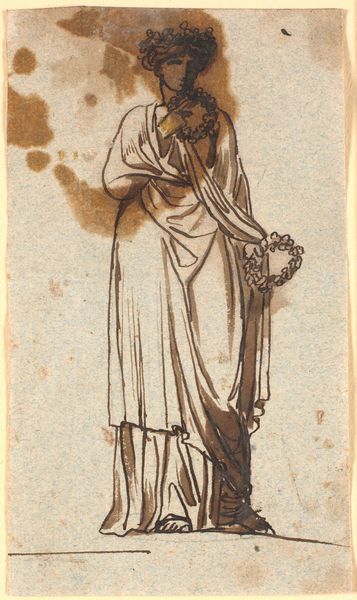
Dimensions: 12 in. × 5 9/16 in. (30.5 × 14.2 cm) Framed: 15 3/4 × 7 3/4 in. (40 × 19.7 cm)
Copyright: Public Domain
Curator: Well, here we have Hippolyte Flandrin's "Hezekiah, King of Judah," made sometime between 1856 and 1863. It’s currently held at The Metropolitan Museum of Art. Editor: There's an almost ethereal quality to it. He appears staged and timeless, a bit like an icon set against that striking blue. The medium—is that oil? It seems almost faded, matte... Curator: The artwork involves the layering of oil paint with colored pencil. Look closely, and you’ll see where the artist experimented to achieve that luminous quality. Notice the halo—it isn’t simply applied; it appears built into the layers. Editor: And how does that choice serve the social context? Royalty, certainly, is presented but with muted drama and soft details; Hezekiah isn't screaming power. How was it intended to function, beyond simple portraiture of power? Curator: Flandrin came from an artistic tradition in which making preparatory cartoons for larger mural works was fundamental to artistic production, which seems to be what is happening here. This king, known for religious reforms, aligns with this artist's commitment to institutional artistic patronage that could offer his particular interpretation of historical leaders in relationship to the canon. Editor: So, we're seeing a comment on artistic labour, the support structures—institutional patronage—necessary to bring images like this into being, images that both bolster and subtly reshape perceptions of authority? Fascinating how materials and method tie into the entire power structure. Curator: Precisely. I also note how Flandrin employed layering—the deliberate application of oil paint on colored pencil which then produces an interplay that encourages us to reconsider classical approaches to figure drawing. Editor: It seems that Flandrin is not only depicting a king, but is reflecting and experimenting on art production itself. I find that exceptionally powerful. Curator: As do I. Thank you for illuminating aspects of material, process and cultural reception within this fascinating piece, all considerations necessary for our audience. Editor: The pleasure was all mine. Considering the blend of material and historical dimensions gives real insight into artwork and what "Hezekiah, King of Judah" is saying within historical and cultural discourses.
Comments
No comments
Be the first to comment and join the conversation on the ultimate creative platform.
